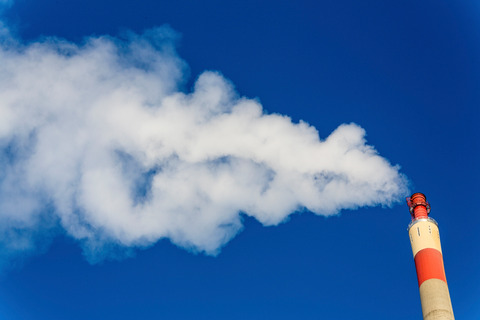Researchers from Aarhus University transform carbon dioxide into green super gas
The primary ingredients are water, power from wind turbines and a large amount of carbon dioxide that would otherwise have to be released straight into the atmosphere. The result is an artificially produced version of natural gas with a huge green potential.


In close cooperation with a number of Danish businesses, researchers from Department of Engineering, Aarhus University have developed a technology that enables production of a gas that is both sustainable and potent, and at the same time economically viable.
They use carbon dioxide, water and electricity in two separate chemical processes to, ultimately, produce energy in gas form.
“This is a very promising technology, which is not only CO2 neutral. In the production process, we consume CO2, and in this way, we reduce our emissions and thereby the climate impact,” says Christian Dannesboe, PhD Fellow at Aarhus University.
Reducing greenhouse gas pollution
The researchers get electricity from the competitive generation of power from wind turbines. They use it to split water into oxygen and hydrogen in a process known as high-temperature electrolysis. Hydrogen, together with CO2, can then be converted into pure methane gas in a catalytic process.
The catalysis produces a considerable amount of heat which, in turn, can be used to evaporate the water prior to the electrolysis process. Thereby, the two chemical processes contribute to a much higher level of efficiency than previously.
“The electricity that goes in comes out as gas. This is highly effective, and the end product is pure natural gas of a quality that is identical to the gas we get from the North Sea or produce from biomass. The difference is in the level of environmental impact. The carbon dioxide used in the production process would otherwise be released into the atmosphere,” says Christian Dannesboe, PhD Fellow at the Department of Engineering.
Initially, the researchers will cover their need for carbon dioxide for the chemical processes by using the existing biogas production from Aarhus University’s large test facilities. Normal biogas consists of 40-50% CO2, which can be reused to produce pure gas.
Denmark is a large battery
The advantage of natural gas is that it is easy to store and transport, and this is one of the most significant perspectives in this research.
“We already have excellent infrastructure for gas in Denmark, and we now have the opportunity to reduce pollution and store power from wind turbines in a stable energy carrier, simultaneously. In principle, we can turn Denmark into a huge battery, and storing energy on this scale can really make a difference,” says Christian Dannesboe.
The technology has been demonstrated at the University’s full-scale pilot plant at AU Foulum, and in just a few years, it can be rolled out throughout Denmark. However, Christian Dannesboe emphasises that this is conditional on all existing biogas plants being provided with an upgrading plant.
“We already have the technology, and it is effective on a large scale. If we established upgrading plants for high-temperature electrolysis and catalysis at all our facilities in Denmark, we would immediately be able to cover 10% of our total energy consumption by renewable gas,” he says.
Cleaner air as an added bonus
According to the researchers’ calculations, the new method for natural gas production enables us to reduce carbon dioxide emissions from each individual Dane by around one tonne every year.
And the potential to reduce our overall environmental impact goes even further than that: In principle we can clean polluted city air from carbon dioxide and use this directly in the same chemical production of gas.
“We need to get used to seeing carbon dioxide as a valuable resource that we simply can’t afford to release into the atmosphere. In the long term, we can improve our air purification technologies, capture pollution from the big cities and use it for production of pure methane gas,” he says.
The researchers are still working to reduce heat loss on their facilities, but the message is clear:
“This is an extremely promising technology. In terms of price, we will not be able to compete with the price of simply extracting natural gas directly from the ground. We have to pay for electricity and water, but we will benefit hugely in terms of the CO2 balance,” says Christian Dannesboe.
MORE INFORMATION
The project is called “El-opgraderet biogas 2” (electricity-upgraded biogas 2) and is funded by the Energy Technology Development and Demonstration Program under the Danish Energy Agency.
The researchers from the Department of Engineering at Aarhus University have carried out the world's most comprehensive pilot tests of high-temperature electrolysis (50 kW). The electrical efficiency of the electrolysis is between 96-100%, and this allows total efficiency for the entire facility of very close to 80%. The reason for this is that the researchers have succeeded in creating synergy between the methanisation process and hydrogen production.
The pilot plant has been operating since the end of 2016 and is able to produce 10 cubic metres of methane gas per hour.
The Department of Engineering collaborates with Haldor Topsøe A/S and Xergi A/S on the project.
CONTACT
Christian Dannesboe, PhD Fellow, Aarhus University
Lars Ditlev Mørck Ottosen, Associate Professor, Aarhus University
